Bell pepper is a plant from the nightshade family, characterized by sweet hollow fruits, which are widely used in cooking. Vegetables are eaten raw, boiled, stewed, baked and canned. It is a frequent ingredient in many salads, soups, main courses and sauces.
Vegetable culture contains many vitamins and minerals, which makes it not only tasty, but also a useful product for the human body. In addition, the vegetable is low-calorie, due to which it is often included in diet food. However, it should be borne in mind that there are several types of bell pepper, so its calorie content, as well as the amount of proteins, fats and carbohydrates per 100 grams, depend on the variety selected.
Content
- 1 The chemical composition and useful properties of pepper
- 2 Calorie and nutritional value of bell pepper
- 3 Table of proteins, fats, carbohydrates in the composition of different types of pepper
- 4 What is the difference between the calorie content of red pepper from green or yellow?
- 5 Low-calorie bell pepper recipes
- 6 Common questions
The chemical composition and useful properties of pepper
The rich chemical composition of the product endowed it with many useful properties that contribute to improving the general condition of the body.
Vegetable culture contains:
- Proteins
- Sahara;
- fatty acid;
- alimentary fiber;
- folic and ascorbic acids;
- vitamins (A, E, K, H and group B);
- flavonoids;
- micro and macro elements (potassium, sodium, calcium, magnesium, phosphorus, chlorine, iron, zinc, iodine, cobalt, copper, etc.);
- alkaloid capsaicin;
- water.
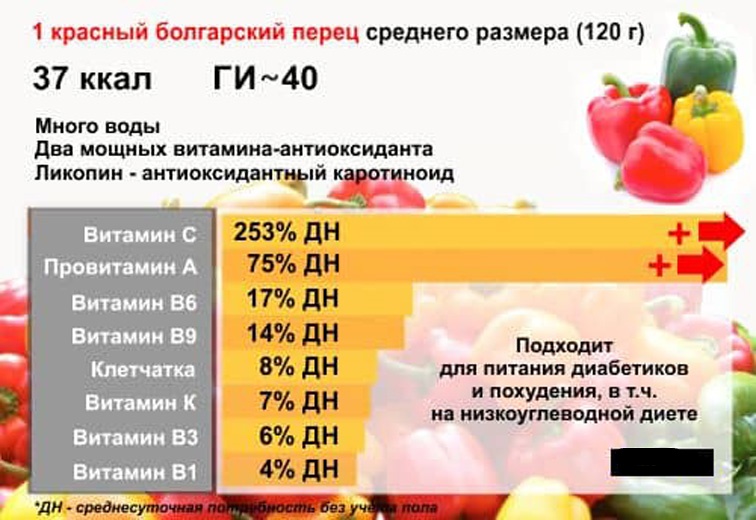
Vitamin E favorably affects the condition of the skin, slowing down its aging. In addition, the product:
- Normalizes the work of the cardiovascular system.
- It removes "bad" cholesterol from the body.
- Lowers blood pressure.
- Thinning blood.
- Prevents the development of anemia.
- Soothes the nervous system and normalizes sleep.
- Lowers blood glucose.
- Improves eyesight.
- Promotes faster digestion of food.
- Enhances intestinal motility.
- Accelerates the metabolism.
- Protects body cells from carcinogens.
- Stimulates appetite.
- Prevents the development of congenital CNS pathologies in the fetus.
- Strengthens hair follicles.
- It relieves skin from peeling.
Due to this effect of pepper on the digestion process, it is included in many diet programs aimed at weight loss. To saturate the body with a daily norm of vitamins and minerals, it is enough to eat 1-2 fruits.
Calorie and nutritional value of bell pepper
Capsicum is a low-calorie product that is allowed to be consumed even during the toughest diets. However, despite the low calorie content in the product, it is able to saturate the body with almost all the substances and minerals necessary for the normal functioning of the body.
In 100 grams
Calorie content of 100 g of fresh vegetable is from 20 to 30 kcal, depending on its color.
100 grams of product contains:
- water - 91 g;
- proteins - 1.3 g;
- fatty acids - 0.1 g;
- easily digestible carbohydrates - 4.9 g;
- dietary fiber - 1.9 g;
- ash - 0.6 g.

The list contains averaged indicators of the nutritional value of the product, without taking into account specific features.
In 1 piece
The number of calories and the number of nutrients in one pepper depends on its color and size. So, in 1 vegetable weighing 200 g contains about 40-60 kcal.
Nutrition value of 1 piece:
- water - 182 g;
- proteins - 2.5 g;
- fatty acids - 0.2 g;
- carbohydrates - 9.8 g;
- fiber - 3.8 g;
- ash - 1.2 g.
The nutritional value of a product may vary depending on the variety of vegetable. For example, there is more sugar in red fruits than in green peppers.
In boiled pepper on water with salt
The number of calories of heat-treated pepper varies slightly. So, in 100 g of a vegetable crop boiled in water with salt contains approximately 29 Kcal. Calorie cooked green fruit is slightly less, and as a rule, does not exceed 26 Kcal. During cooking, the amount of nutrients in the composition of the product remains virtually unchanged.
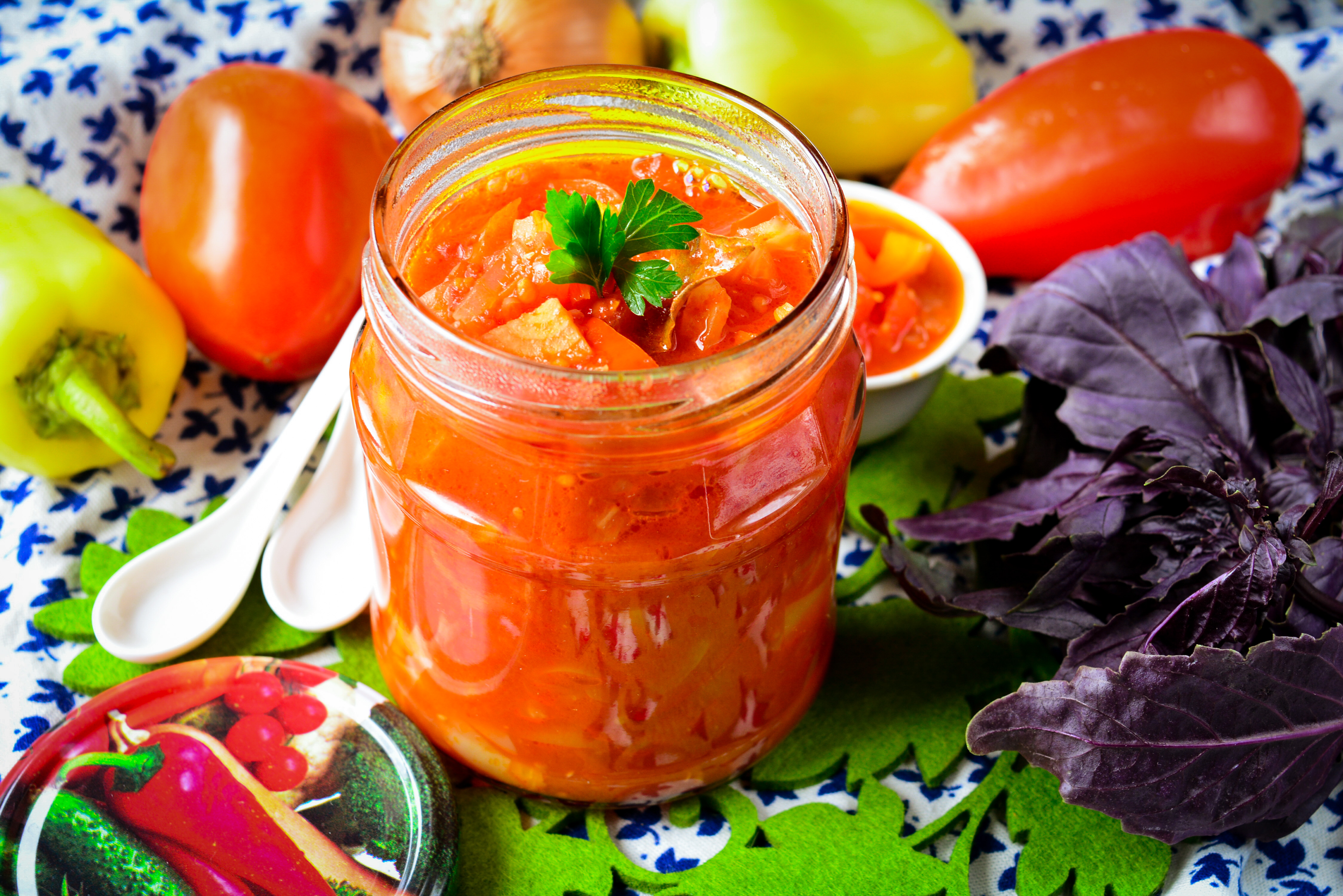 You may be interested in:
You may be interested in:Table of proteins, fats, carbohydrates in the composition of different types of pepper
Proteins, fats and carbohydrates (hereinafter referred to as BJU) are substances that are necessary to maintain the vital activity of the human body. Lack of one of these compounds can lead to serious diseases and pathological processes in the body.
Capsicum, like most plant-based products, contains a balanced amount of BJU, which makes it not only tasty, but also a healthy food. People who follow a diet, as a rule, do not have enough calories and BJU, respectively, so it is especially useful for them to introduce this vegetable into their diet. The product will help fill the deficiency of nutrients in the body, without harming the figure.
The content of BFU in fruits, depending on their color, is presented in the table:
| Amount per 100 g | Red | Yellow | Green |
|---|---|---|---|
| Squirrels | 1,3 | 1 | 0,86 |
| Fats | 0,1 | 0,2 | 0,2 |
| Carbohydrates | 5,3 | 5,4 | 2,9 |
A small amount of calories in combination with a useful chemical composition and a balanced content of BZHU, allow the product to be used in dietary nutrition. A vegetable present in the daily diet will speed up the process of losing weight without stress for the body. It is pepper that is most often used in express diets, which help to throw off a few kilograms in a short time.
What is the difference between the calorie content of red pepper from green or yellow?
Calorie content of a product also depends on its color. So, a yellow vegetable contains about 3 Kcal more than a red fruit. Differences in caloric value are explained by different amounts of nutrients in the composition.
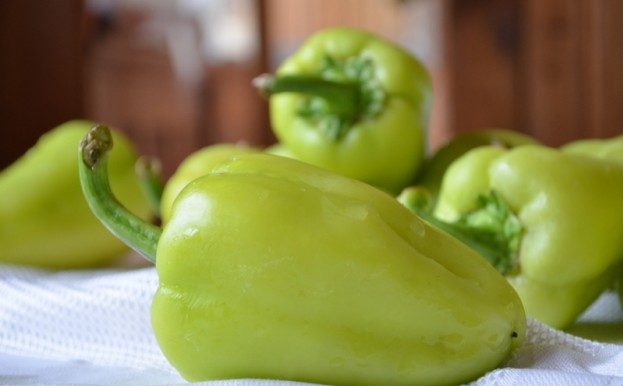
For this reason, the unripe fruits of the plant are slightly bitter in taste. But yellow and red fruits lead in the amount of sugar in their composition, so they are valued for their energy value.
Also, vegetables of different maturity differ in the content of minerals, vitamins and other substances necessary for the normal functioning of the body. Green fruits are rich in capsaicin - a substance that stimulates appetite and improves the condition of the digestive tract. It is capsaicin that gives the characteristic bitter taste to green pepper.In the yellow vegetable, there is a large amount of pectin, rutin and fiber, and in red - vitamin C and beta-carotene.
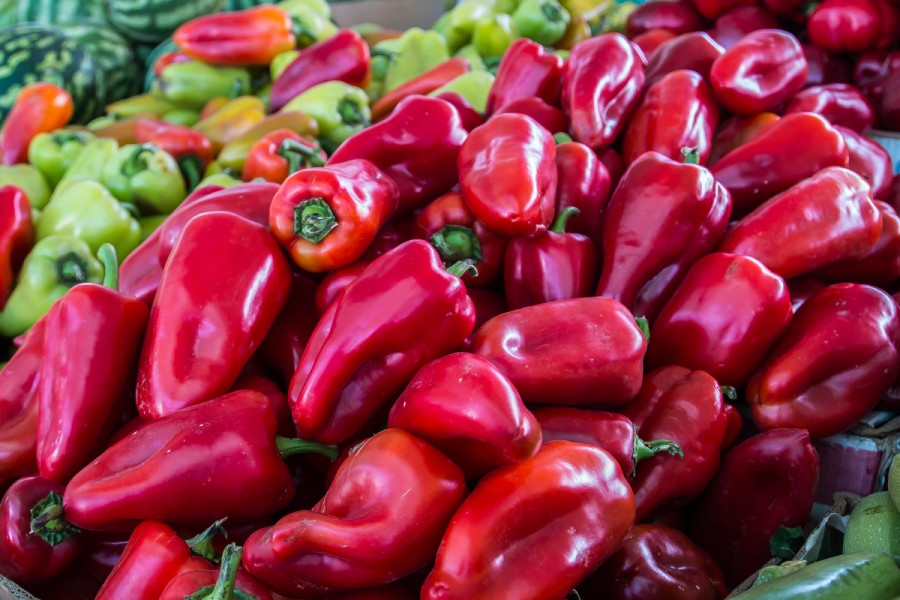
Therefore, losing weight people should give preference to green fruits because of the low sugar content in their composition. But in case of poor immunity it is recommended to introduce a red vegetable into your diet, since a large amount of vitamin C is present in it.
It should be borne in mind that the color of the fruits of the plant varies from the degree of their maturity, and not the variety. So, on one plant, green peppers first appear, which eventually change color to yellow, and later to red. Suitable fruits of any degree of maturity.
Low-calorie bell pepper recipes
A vegetable is a frequent ingredient in a variety of low-calorie culinary dishes that will help bring your body into shape.
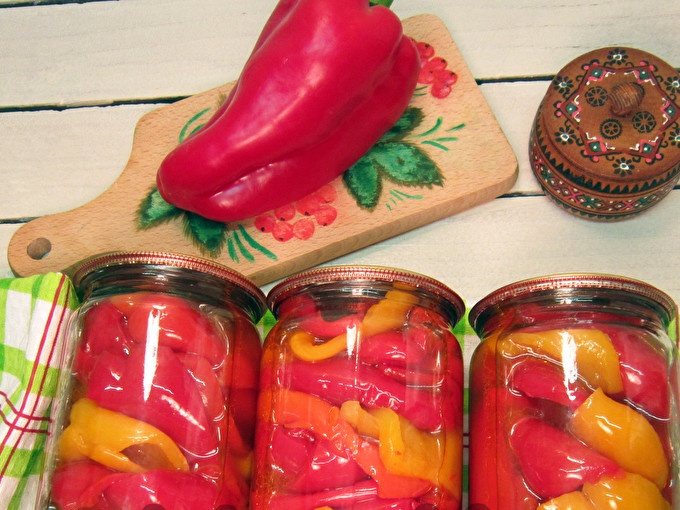 You may be interested in:
You may be interested in:Cream soup
Cream-soup based on fried peppers is a delicate and tasty dish that quenches appetite and does not contribute to weight gain.
To prepare it, you need to take:
- Broth (chicken) - 1 l.
- Sweet red pepper - 4 pcs.
- Cauliflower - 1 pc.
- Onions - 1 pc.
- Coarse Chile - ½ tsp.
- Paprika - 1 hour. l
- Garlic - 1-2 cloves.
- Vegetable oil - 1 tbsp. l
- Thyme - 1 hour l
- Cheese (goat) - 100 g.
- Spices to taste.
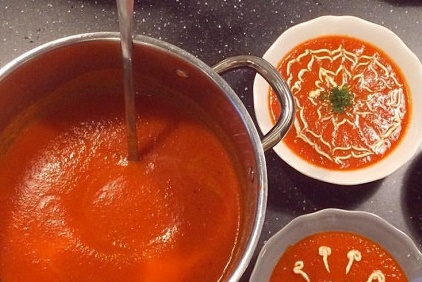
Before you start frying peppers, they must be washed, cut in half and cleaned from seeds. Vegetables are fried in hot oil for 10 minutes, on the inside. Fried vegetables are laid out in an airtight container for 20 minutes, after which they must be peeled and cut into cubes.
The cauliflower disassembled for inflorescences is baked in the oven for half an hour, at 200 °. At this time, it is necessary to fry the onion, diced, until soft. After that, chopped garlic, thyme and chili are added to it. Next, pepper, cabbage, paprika, broth, goat cheese and spices are introduced into the mixture. The soup is cooked for 10 minutes, after which it is brought to a creamy consistency in a blender.
Stuffed pepper
This dish is very popular all over the world.
Ingredients:
- Pepper - 3 pcs.
- Rice - 150 g.
- Stuffing - 300 g.
- Onion - 1 pc.
- Garlic - 2 cloves.
- Paprika - 1 pinch.
- Spices to taste.
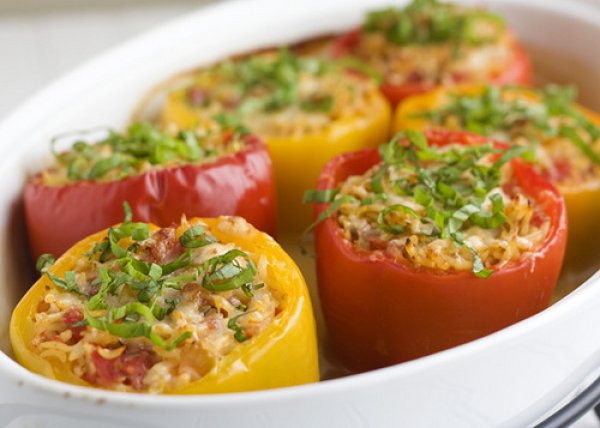
To prepare the filling, boil the rice and fry the finely chopped onion and garlic until soft. Minced meat and paprika are added to the onion, and fried for 10 minutes. Then rice is introduced into the minced meat, and the resulting mixture is simmered in the pan for a few more minutes. Then spices are added.
In the peppers, from which the top was previously removed and the seeds removed, the stuffing is laid. Stuffed vegetables are laid out on a baking dish, on the bottom of which it is recommended to pour a little water. Peppers are baked for 15 minutes at a temperature of 220 °.
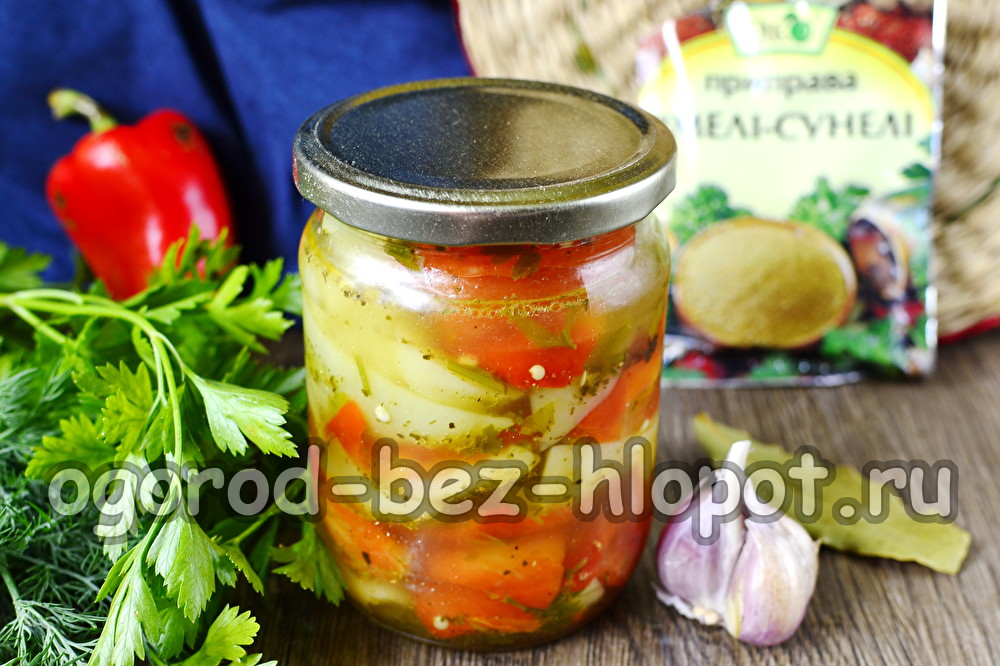 You may be interested in:
You may be interested in:Baked pepper salad
Warm salad will not only satisfy your hunger, but will also delight you with its bright colors.
The salad includes:
- Sweet pepper - 3 pcs.
- Red onion - ½ pcs.
- Parsley to taste.
- Olive oil - 2 tbsp. l
- Wine vinegar - ½ tbsp. l
- Caper - 2 l
- Salt to taste.
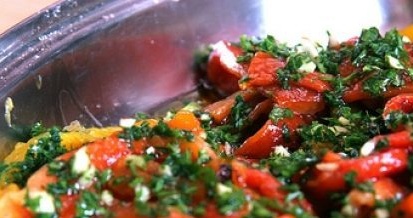
The vegetable is cleaned of seeds, cut into 6 parts and slightly sprayed with oil. Then it is laid out on a baking sheet and baked in the oven until soft. Finished pepper is cut into strips and mixed with chopped onions, capers and parsley.The salad is seasoned with olive oil and vinegar.
Vegetable rolls
A simple and tasty dish, for the preparation of which it is enough to take:
- 3 sweet peppers;
- 200 g cream cheese;
- 30 ml of olive oil;
- spice.
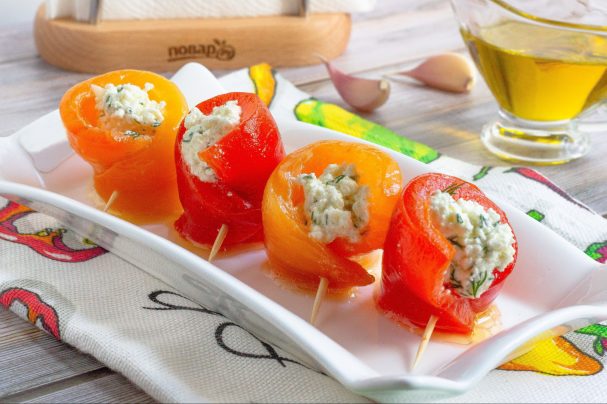
Vegetables cut in half, without veins and seeds, are baked in the oven for 15 minutes at 200 °. Baked pepper is placed in a sealed container for 10 minutes, after which the peel is removed from it. Cream cheese is mixed with the rest of the ingredients, and laid out on vegetables, cut into strips, then twisted into rolls and fixed with skewers.
Common questions
Sweet peppers are a tasty and low-calorie product that will make any dish more attractive. The healthy fruit goes well with other vegetables, rice, meat and fish, complementing and revealing their taste.




 Calorie pepper stuffed with meat and rice - BZHU per 100 grams
Calorie pepper stuffed with meat and rice - BZHU per 100 grams Gorky pepper - the best varieties for open ground
Gorky pepper - the best varieties for open ground Hot pepper seeds - the best varieties for open ground and reviews
Hot pepper seeds - the best varieties for open ground and reviews Capsicum tincture for hair - how to use and reviews
Capsicum tincture for hair - how to use and reviews